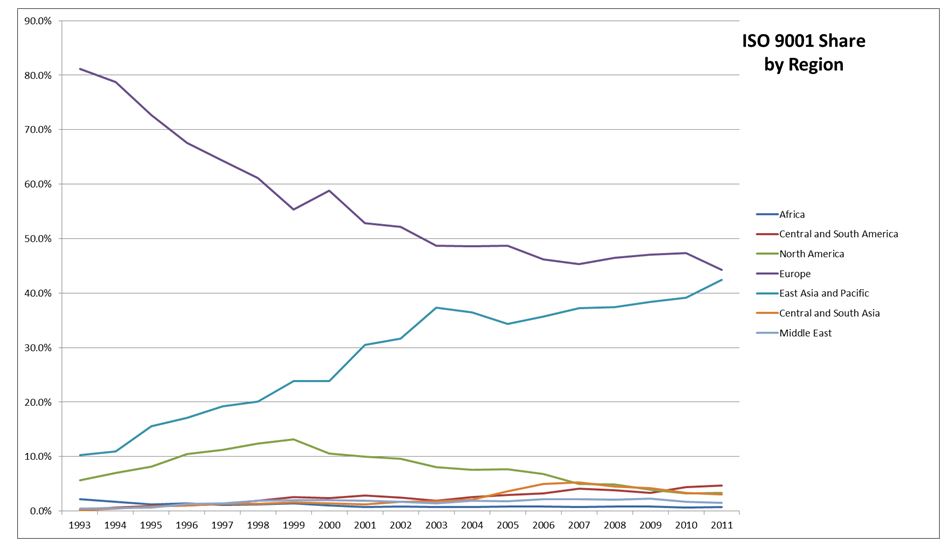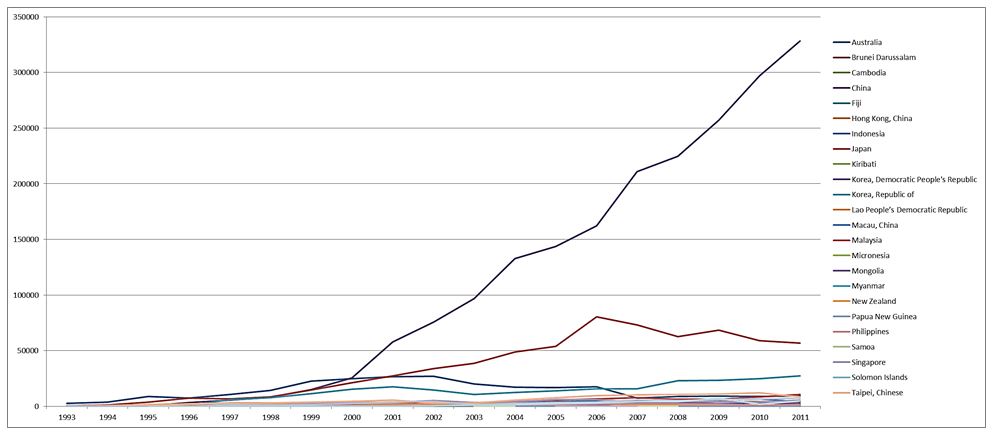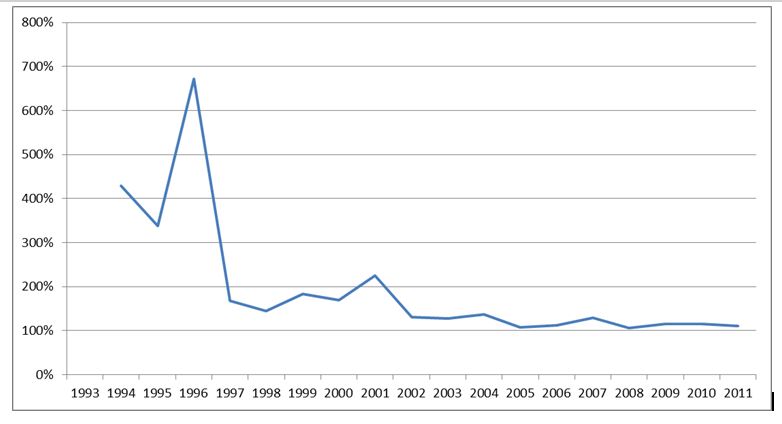Presumably to deflect the nagging issue of ISO 9001 declining growth rates, ISO has taken to pointing to “Asia” as the glimmer of hope for the standard. I put that in quotes for a reason, so stay with me.
The last release of the annual “ISO Survey” includes data as of 2011. The data showed continuing declines in ISO 9001 adoption in almost all geographic sectors, except Asia and, to a much lesser degree, Central/South America.
An impressive and imposing statistic, at least visually. This led ISO Secretary General Rob Steele to boast (emphasis added):
A number of markets where certification took off in the early 1990s are showing signs of having reached maturity. For example, overall, this is the case of ISO 9001 certification in Europe, but the effect is not evenly spread for Italy is the country that experienced the highest growth in certificates. The East Asia and Pacific region has almost overtaken Europe for the regional share of ISO 9001 certificates.
But, as is usual with ISO Survey spin, there are a lot of things wrong with this statement. Let’s look at the data.
Reviewing ISO Survey back as far as the early 2000’s, one finds that “Asia” has been a leader in ISO 9001 adoption all along, with China and Japan consistently in the top ten slot. That Asia has good ISO 9001 participation is nothing new; it is only because the rest of the world is dropping ISO 9001 that Asia appears to be growing.
But “Asia” itself is a misnomer. By examining the growth by nations in Asia, we can see that all but China and Japan (and, to a lesser extent, South Korea) have either flatlined or declined in recent years.
So claiming “East Asia and Pacific region has almost overtaken Europe” is misleading on two fronts, so far: Asia is not monolithic, and only 2 – 3 countries in that region are actually seeing growth, and the entire thing relies on the failures of ISO 9001 elsewhere in the world. Under this thinking, if every country in the world dropped ISO 9001 entirely, China would have 100% share, and ISO would brag about its exposure there.
But wait, it’s worse. When one isolates the China data, we find that even in that massive industrialized country, ISO 9001 interest fell, and then flatlined.
(Compare this with China’s industrial growth rate, and you see some interesting data.)
This is not the first time, nor likely the last, that ISO representatives have grossly misrepresented the data with soundbites designed to inflate the positive, and ignore the negative. I’ll have another piece shortly on some previous statements made by former ISO Secretary General Alan Bryden and ISO PR rep Roger Frost which are so contrary to the data, they can only be classified as intentional lies.
The problem this time is that while Mr. Steele and Mr. Frost continue to spin their story, they create a culture that ignores the world’s legitimate concerns with the post-2000 editions of ISO 9001, and thus doom the standard to further irrelevance.
We can fix this, but it requires honesty and courage, something currently lacking in Geneva.
Christopher Paris is the founder and VP Operations of Oxebridge. He has over 35 years’ experience implementing ISO 9001 and AS9100 systems, and helps establish certification and accreditation bodies with the ISO 17000 series. He is a vocal advocate for the development and use of standards from the point of view of actual users. He is the writer and artist of THE AUDITOR comic strip, and is currently writing the DR. CUBA pulp novel series. Visit www.drcuba.world










